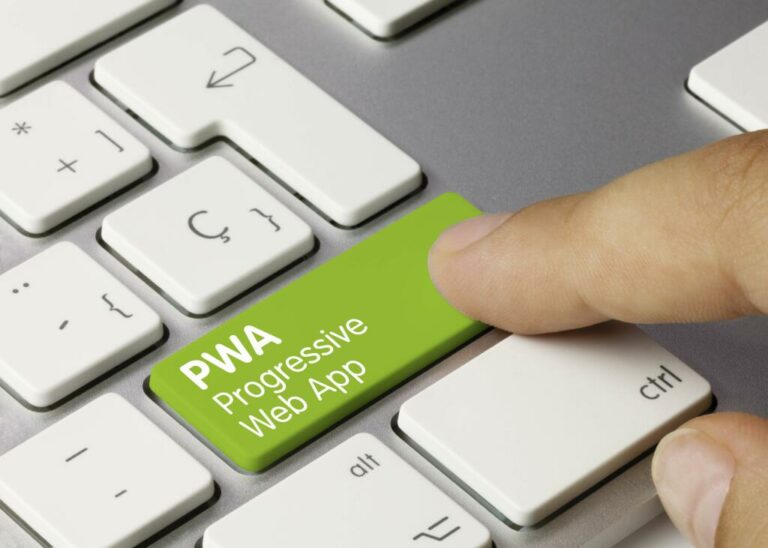The product development course of is a six-stage plan that includes taking a product from initial concept to ultimate market launch. This process helps break down duties and manage cross-departmental collaboration. Prototyping is about bringing conceptual or theoretical ideas to life and exploring their real-world impact before finally executing them. All too often, design teams arrive at ideas with out sufficient analysis or validation and expedite them to last execution earlier than there is any certainty about their viability or attainable effect on the target group.
Whoever the viewers is also needs to be primed, ready, and given background data to keep away from confusion. Never the finely tuned entity of a completed product, these ideas are became something tangible, – as an example – a digital prototype or wireframe prototype. You should first identify the users, define their issues, and brainstorm and choose an acceptable answer within the type of a product or service before deciding how to proceed with the prototyping course of.
Prototypes allow you to iterate, refine, rework, and make enhancements till you’ve a market-ready product. Design pondering is centered on the human experience, and the most effective strategies are people who put folks front and center. Fortunately, the prototyping stage is actually about testing what we predict individuals will want in opposition to what they honestly suppose and really feel. Storyboarding works with the understanding that user experience isn’t a single second in time. Getting began could additionally be easier with the storyboarding template, so you’ll be able to focus on the story you need to tell. Storyboarding is a way used to reveal an concept with a sequence of recent or transitional elements.
Prototyping: A Guide To The 4th Stage Of Design Thinking
Many groups opt for quick-and-dirty coded prototypes for testing solutions before building the precise product. Such prototypes might involve light coding, together with HTML, CSS and JavaScript. The degree of interactivity your prototype has will depend on why you’re building the prototype, what stage of design you’re in and how a lot time you need to create the prototype. Usability testing can be done with low-fidelity or high-fidelity prototypes.
Its main purpose is to get concepts vetted immediately earlier than shifting on to a extra refined and realistic-looking prototype. Product growth is the method of constructing a new product, from ideation all the method in which through launch. Product development begins with those preliminary brainstorming classes, when you’re just discussing a budding concept. From there, the process is creative but strategic, and you may have seen it accomplished in 1,000,000 different ways. But without clear group, it can be hard to mesh creativity and technique successfully. Which is where the product improvement process comes in—a six step framework to help you standardize and outline your work.
Prototyping
There is not much difference between most of these prototypes and the early rough prototypes we may develop on the earlier phases of testing out ideas. High-fidelity prototypes are prototypes that look and operate nearer to the completed product. For example, a 3D plastic model with movable components (allowing users to manipulate and work together with a device in the same method as the ultimate design) is high-fi compared to, say, a wooden block.
So how are you aware whether to use a low, mid, or high-fidelity prototype? It all is decided by what you need to obtain along with your prototype, as nicely as how full your design is. An instance of this would be the prototype of a rest retreat website. By establishing visible details via an look model, you presumably can test font, shade, and other design elements simply as they would appear to the visitor on an precise web site. The appearance modeling template takes away the guesswork on how to observe and check the varied elements of every iteration of your prototype. The schematic diagramming template works well when minimal shade is used.

The great factor about clickable wireframes is that they can be shortly and simply modified. Unlike a paper prototype where you’ll have to redraw the complete display screen if you want to make adjustments, you could make minor edits with out ranging from scratch. Still, low-fidelity wireframes are best suited for prototyping in the early phases of the project. A clickable wireframe not only represents the visual layout of a digital interface, but in addition presents a certain degree of interactivity.
This includes understanding the needs of your customers and how your product will meet these. Your prototype needs to match the final real-world performance of the top product as carefully as possible. This is similar whether or not designing a brand-new product or fine-tuning an present one.
Execs And Cons Of Paper Prototypes
From digital and paper prototyping to fast prototyping and high-fidelity prototyping (and many more in between), it’s essential to know what may apply to any product. Finding the proper form of prototyping is the only way to execute ideas which are sensible and viable to thrive in the real world. As a rule, low-fidelity prototypes maintain content material and visuals to a minimal, presenting only the vital thing parts as fundamental shapes to have the ability to convey visible hierarchy. Their simplicity can lead to uncertainty during testing; it’s not always simple for users to identify what and the way the prototype is supposed to work. We can — and will — use prototyping as a part of various levels of Design Thinking. You can use prototyping as an ideation technique, because it allows you, in addition to users, to discover different options.

Through continuous prototyping, you’ll make informed design decisions—iterating your method to an intuitive, user-friendly product that your users will love. Mid-fidelity prototypes can be cheap to create (depending on the tools you choose), and don’t require a lot design information or experience. These are nice if you wish to test broad practical features, such as the user move for one particular use case (i.e., the person faucets this button, which leads them right here, then here then here). This is a superb method to take if you’re short on time and/or simply have to get an summary across screens to make certain that the options youve designed really work and don’t overlook any key concerns. Design Thinking is a design methodology that provides a solution-based approach to solving issues. This is the place prototyping is out there in by offering a set of instruments and approaches for correctly testing and exploring ideas before too many sources get used.
Go From Low To High Constancy
Prototyping is an effective methodology to validate ideas, test feasibility, safe buy-in, and create alignment. There are totally different prototyping strategies that are appropriate for different wants. However, once identified appropriately, prototyping may help save time and sources whereas creating worth early in product discovery. In prototyping, you make a simple model of your proposed product so you possibly can check it and see how properly it meets customers’ needs based on their suggestions. You ought to think about prototyping as early as possible, using paper prototyping if appropriate, so that consumer feedback can information development.
Limit it to a trusted inner circle, but ensure it’s an lively group that might be keen to give you suggestions shortly. LogRocket identifies friction factors within the person expertise so you could make informed choices about product and design adjustments that should occur to hit your goals. With LogRocket, you probably can understand the scope of the problems affecting your product and prioritize the adjustments that have to https://www.globalcloudteam.com/ be made. LogRocket simplifies workflows by allowing Engineering, Product, UX, and Design groups to work from the identical knowledge as you, eliminating any confusion about what needs to be done. In this guide, we’ll show you tips on how to construct and test a prototype to assist you save time and sources on pointless ideas. The first step in formalizing sketches is to create digital variations of them; you must use Adobe XD, Sketch, Framer, or Flinto to do so.
- Rough prototyping is a low-fidelity prototype sketch where you possibly can create a selection of fast, low-cost visible representations for discussion, testing, and suggestions.
- It illuminates all the intricacies and chaos of bringing a model new thought to life.
- You can use prototyping as an ideation methodology, as it allows you, in addition to users, to discover alternative solutions.
- When it involves the development of latest products, the importance of prototyping can’t be taken for granted.
In UX Design, prototypes are anticipated to have some stage of interactivity. Mockups and wireframes are considered static, non-interactive design property. Sometimes sketches are acceptable variations of a prototype, so lengthy as multiple sketches are laying out an experience.
Prototyping is an integral part of Design Thinking and User Experience design in general as a outcome of it allows us to test our ideas shortly and improve on them in an equally well timed fashion. The Institute of Design at Stanford (d.school) encourages a “bias in the path of action”, where constructing and testing is valued over thinking and assembly. Before we begin making prototypes to check our assumptions, let’s get a better understanding behind the what, how and why of prototyping. 3D printing has revolutionised prototyping, allowing engineers to create practical production design models shortly.
Stage 1 In The Design Pondering Course Of: Empathise Together With Your Customers
These prototypes may be for both digital or physical models and are used to test options that can be added later in the design course of. These permit prototyping designers to augment or adapt an present prototype with further options. Physical prototypes can range from easy paper-based designs by way of to extra complex versions. These offer what is a website prototype a tough concept of a design and show a scaled down version of a concept ahead of the creation of a larger scale model. Used for a spread of different designs, these are particularly properly suited to smaller objects, but can be used for bigger initiatives such as architectural designs.
Prototypes are available in all completely different shapes and sizes, starting from easy paper models to completely practical, interactive digital prototypes. First, though, it’s necessary to grasp the value of prototyping—which brings us to section three. In look modeling, you’ll brainstorm and plan out the emotional and visible traits of your final design. You’ll want it to look as much like the true thing as possible, with particulars on the emotional connection you want end customers to have with the design.
There are 1000’s of recent concepts that originate every day to unravel a specific drawback. Alongside this, no one can, with absolute certainty, say that their imaginative and prescient will work or that users will ultimately want and use their merchandise. Sometimes even great ideas fail as a outcome of they’re overly sophisticated to use or understand. Now you know the ins and outs of prototyping, why it’s so invaluable, and what kinds of prototyping you may use throughout your design process.

